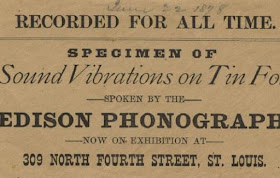by Barbara Owens
Last year, Spicer Art Conservation, LLC had the great honor of working on the John Ellis Wool coatee, c. 1813, from the Rensselaer County Historical Society. RCHS was a 2011 recipient of a Conservation Treatment Grant from the Greater Hudson Heritage Network.
Wool's 200 year old coatee, a rare (only three known coats of this type exist) uniform from the War of 1812, had considerable damage to it from previous insect infestation, with holes scattered over much of it. It had open seams and deteriorated thread and cording. The jacket also had overall soiling and grime. A few creases and folds were evident.
Each of these areas of treatment needed to be addressed, but equally important is that Wool's coatee is often studied by military researches and re-enactors. It is also requested for exhibition at other museums and historical societies. These various needs, from very different groups, required that the coatee be prepared for exhibition, study, storage, and transport.
Through the Conservation Treatment Grant, RCHS was able to have the coatee itself preserved and stabilized. The next step was to create a custom-made mannequin form for exhibition. The form consisted of metal armature which supported a Ethafoam structure. The Ethafoam was then covered with both cotton knit fabric and display fabric where visible.
But this is no ordinary mannequin, this mannequin included something unique. This mannequin's custom built components are two-fold. They serve to provide both structure in exhibition, as well as support while in storage. This is accomplished by building a "vest" (which fits around the mannequin) with attached padded arms that stay with the artifact during both exhibition and storage. The vest is separate from the form, however it remains inside the coatee to provide support in storage. An additional padded form was made to retain its three-dimensional shape to prevent crushing and deformation during storage. This padded form would be inserted into the "vest", inside the coatee for storage. (See photos below: the first is the inside view of the vest, the second is the storage form inserted into the vest.)
A custom-made storage box was also created from inert, conservation approved materials to hold the padded coatee. The storage system made the coatee accessible for study whilst protecting it from excessive handling.
Working on a grant-funded project like this one from RCHS poses challenge and opportunity. Never before had Spicer Art Conservation been asked to not only provide expert preservation of a garment, but to provide a versatile mannequin capable of providing structure and support for very different needs and demands. It came out beautifully and the garment has since travelled to Canada for a visiting exhibition.
Doing the conservation work for the Wool coatee also marked an important milestone for Spicer Art Conservation. This was the 11th consecutive year we have done conservation for at least one of the organizations who were recipients of the Conservation Treatment Grant from the Greater Hudson Heritage Network.
Learn more about John Ellis Wool's coatee and RCHS here: http://www.rchsonline.org/
Gwen Spicer is a textile conservator in private practice. Spicer Art Conservation specializes in textile conservation, object conservation, and the conservation of works on paper. Gwen's innovative treatment and mounting of flags and textiles is unrivaled. To contact her, please visit her website.



